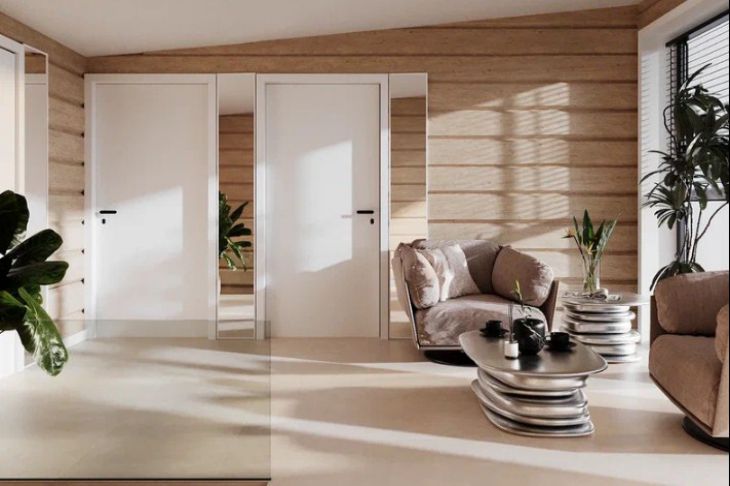You invest money in design, but the result resembles a furniture store catalog: everything is neat, but without soul?
The culprit is the “rule of three,” a principle that professionals know about but rarely talk about out loud.
By violating it, you turn the apartment into a set of objects that seem unfamiliar with each other.

The rule of three states that decorative elements and furniture should be grouped in threes. This magic number creates a balance between chaos and monotony.
For example, three pillows on the sofa, three paintings on the wall, three vases on the shelf.
But why exactly three? Two objects look like a pair, four like a queue, and three create dynamics.
Look at your living room. A sofa, an armchair, a floor lamp – these are three objects of different heights and shapes. If you add a coffee table to them, you get a fourth element that disrupts the harmony.
Solution: combine the table with the sofa and some other item into one group, and the floor lamp, armchair and additional element into another, creating two independent triplets.
Colors also follow this rule. The main shade, the accent and the neutral - a trio that works without failures.
Let's say gray walls (base), turquoise sofa (accent), beige rug (neutral). By adding a fourth color - for example, red pillows - you risk overloading the palette.
But if red is repeated in three small details (pillows, vase, book), it fits into the system.
Textures are another area where the trio works wonders. The smooth leather of the sofa, the woolen throw, the metal lamp – three different materials that create depth.
But a glass table, a glossy cabinet and a mirror in one area are three equally shiny surfaces that violate the rule. They should be diluted with matte or relief elements.
The mistake most people make is to use the rule of three only in decor. In fact, it also applies to planning. When zoning a room, divide it into three parts: for example, a work area, a rest area, and a storage area. If there are two zones, the space seems unfinished; if there are four, it feels overloaded.
But how to avoid artificiality? The secret is that the threes should not be conspicuous. Three books on the table, different in height, three candles in candlesticks, three shades of green in textiles - these are unobtrusive repetitions that the brain reads as harmony.
Try applying this rule today. Collect three items on a shelf, rearrange the accents in the color scheme, divide the room into three zones.
You will be surprised how the interior will sparkle with new colors - after all, three is not just a number. It is a formula that turns the house into a living space.
